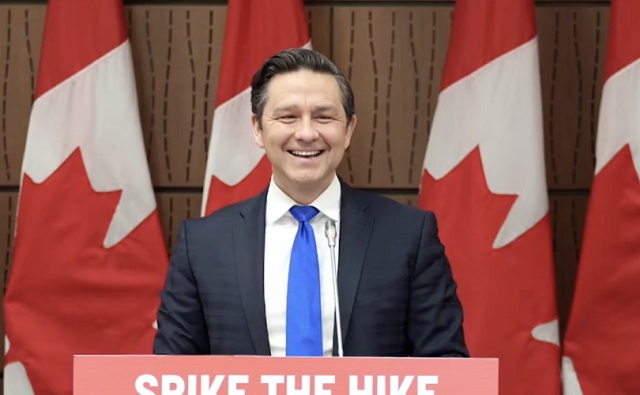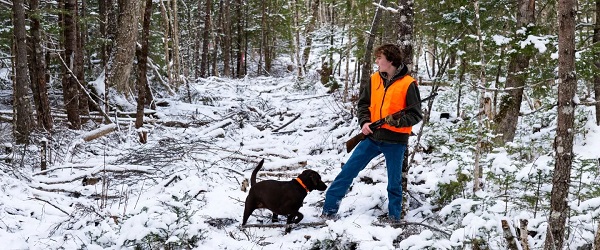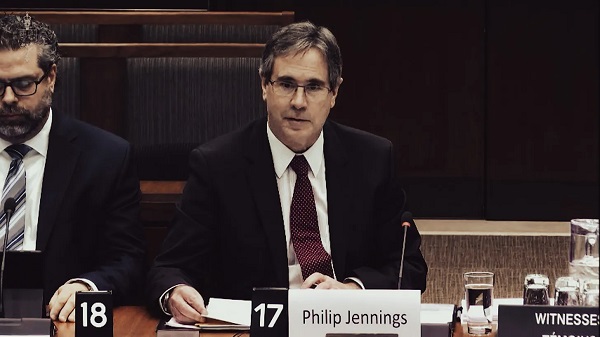National
Poilievre calls for immediate election after NDP pulls support from Trudeau’s Liberals

From LifeSiteNews
If the NDP vote alongside the Conservatives to pass a vote of non-confidence against the Trudeau government, as Poilievre desires, then an election could happen as soon as this fall.
Conservative Party leader Pierre Poilievre has called for an immediate “carbon tax election” following the New Democratic Party’s (NDP) break from the Liberals.
In a September 4 post on X, Poilievre responded to NDP leader Jagmeet Singh officially pulling his support for Prime Minister Justin Trudeau’s Liberals earlier that day, calling for Singh to go one step further and call for an immediate federal election.
“Canadians need a carbon tax election NOW to decide between the Costly Coalition of NDP-Liberals who tax your food, punish your work, take your money, double your housing costs and unleash crime and drugs in your communities OR common sense Conservatives who will axe the tax, build the homes, fix the budget, and stop the crime,” he declared.
Two years ago, Sellout Singh sold out workers and signed on to a costly coalition with Justin Trudeau that hiked taxes, ballooned food costs, doubled housing costs and unleashed crime and chaos in our once safe streets.
In today's media stunt, Sellout Singh refuses to state…
— Pierre Poilievre (@PierrePoilievre) September 4, 2024
Poilievre condemned Singh for signing onto an informal coalition with the Trudeau government which would have kept the Liberals in power until the next election, which is scheduled for the fall of 2025.
“Two years ago, Sellout Singh sold out workers and signed on to a costly coalition with Justin Trudeau that hiked taxes, ballooned food costs, doubled housing costs and unleashed crime and chaos in our once safe streets,” he wrote
“In today’s media stunt, Sellout Singh refuses to state whether the NDP will vote with non-confidence to cause a carbon tax election at the first chance,” Poilievre continued.
“Sellout Singh has voted to quadruple the carbon tax to $0.61/L, a plan that will drive Canadians to food banks and grind our economy to a halt— killing hundreds of thousands of jobs,” he added. “Sellout Singh did all of this after promising he would be an opposition voice.”
It remains unclear if Singh’s NDP would support Liberals on most bills, which could keep Trudeau in power until the 2025 election. However, if the NDP voted alongside Conservatives to pass a vote of non-confidence in Trudeau’s leadership, the election could be moved to this fall.
Late last month, leader of Poilievre called on Singh to pull his support for Trudeau’s Liberals, so that an election could be held.
A recent poll found that 70 percent of Canadians believe country is “broken” as Trudeau focuses on less important issues. Similarly, in January, most Canadians reported that they’re worse off financially since Trudeau took office.
Additionally, a January poll showed that 46 percent of Canadians expressed a desire for the federal election to take place sooner rather than the latest mandated date in the fall of 2025.
Recent polls show that the scandal-plagued government has sent the Liberals into a nosedive with no end in sight.
Similarly, a September poll showed that the Conservatives under Poilievre would win a majority government in a landslide were an election held today. Singh’s NDP and Trudeau’s Liberals would lose a massive number of seats.
MAiD
101-year-old woman chooses assisted suicide — press treats her death as a social good

From LifeSiteNews
It must be said: The media’s relentless glamorization of suicide is repulsive and shameful.
It was once standard press practice to treat suicide as a tragedy. But since assisted suicide and euthanasia are now presented as the final front in the war for total autonomy, “human interest” stories now push the interests of the death lobby and treat suicide as a social good. The message this sends to the suicidal and desperate is clear.
The latest example of this is a December 2 story in Le Journal de Quebec on the assisted suicide of 101-year-old Paulette Fiset-Germain. She died by lethal injection in her room at the Manoir Cap-Santé on December 1. The opening line of the story almost glows with approval:
A centenarian who had lost none of her intellectual capacity is now shining in the sky after choosing medical assistance in dying on Monday.
Fiset-Germain had been living independently and alone only a few weeks ago but suffered two falls and a stroke. Last week, she told the staff and fellow residents that she wanted to die by euthanasia — or what in Canada is called “MAID.”
“I started to have trouble using the walker, I have one hand that I can’t use, the other one that I have trouble with, I can’t see one side anymore,” she said. “I’m at the end. You know when the glass starts to spill, it’s time to do something. In addition, you have trouble 24 hours a day, you don’t sleep. We’re going to close the loop.”
The Journal emphasized that she said this in a “very serene” tone of voice — and made it clear that Fiset-Germain’s family were supportive. “My children accepted my decision because they know me, they know that I am ready for it,” she said. “It started when I broke my hip and couldn’t do anything anymore. My decision doesn’t cause me any stress. I can’t wait. When the doctor agreed, I said, ‘You’re giving me a really nice gift.’”
To be clear: That “gift” is a lethal injection. She chose suicide by doctor — and the media celebrated it. That is nothing short of glamorizing suicide. In fact, the Journal made clear that Fiset-Germain was “grateful for the opportunity (of) medical assistance in dying,” but that she hopes it is expanded. In fact: “The last moments of Mme Fiset-Germain will also be the subject of a documentary.”
So, in addition to the puff pieces about her suicide, we’re going to get death porn propaganda that will be used to push for more suicides, likely (I suspect, although no details are yet available) produced in partnership with the vultures at Dying with Dignity.
“It’s too tight,” the elderly woman explained of Canada’s euthanasia regime, which is so notoriously loose it has been condemned by the United Nations. “We have to expand to relieve many people. There are others who are embarrassed, who are afraid of their children’s reaction. Mine told me, ‘It’s my choice, it’s my body, it’s my life.’” Funny — it seems like whenever someone uses that phrase, somebody is about to get killed.
The Quebec press is not known for its glowing coverage of religious beliefs, but for the suicidal Fiset-Germain, they made an exception. “Since I was little, I believe that when you die you become a star. When you see a shooting star, it’s someone who has left and is looking for a place,” she explained. “I received very good care here and I am very happy to end my days here and die in my bed.”
The article made sure to mention that she will “donate her body to science,” and quoted one of her reminisces of working as a nurse during the war, when she met a badly wounded soldier: “He was 20 years old and had lost both eyes, both arms and both legs. He asked me if he could hear his mother’s voice. I arranged for him to go to his house to hear it. I don’t know what happened to him next, but at that time, you couldn’t ask for medical assistance in dying.”
Her best friend offered her almost-too-enthusiastic support. “It’s a good decision,” her cousin and best friend Louisette Huard said. “After the life she’s had, the physical state she’s in.” I must say that if my best friend thought my suicide was a “good decision,” it would certainly heighten my suicidal ideation, but perhaps that’s just me.
Only the head of Manoir Cap-Santé and another friend were willing to express their grief. “It hurts us, but we respect her decision,” Guylaine Dufresne said. Her friend, Adelyre Goeguen, was blunter: “I didn’t like it right away. It was still a shock, and I don’t accept it at all.”
That, in case you’re wondering, is the correct response to the suicide of a close friend.
Health
23,000+ Canadians died waiting for health care in one year as Liberals pushed euthanasia

From LifeSiteNews
Tens of thousands of Canadians have died while on waitlists in recent years, according to new data. Meanwhile, euthanasia now accounts for five percent of all deaths in Canada.
Over 23,000 Canadians have died while on waitlists for medical care as Liberals focused on euthanasia expansions.
According to government figures published on November 26 by Canadian think tank SecondStreet.org, 23,746 patients died on government waiting lists for health care between April 2024 and March 2025.
“What’s really sad is that behind many of these figures are stories of patients suffering during their final years – grandparents who dealt with chronic pain while waiting for hip operations, people leaving children behind as they die waiting for heart operations, so much suffering,” SecondStreet.org President Colin Craig explained.
“It doesn’t have to be this way. If we copied better-performing European public health systems, we could greatly reduce patient suffering,” he continued.
According to the data, collected through Freedom of Information (FOI) requests, there has been a three percent increase of deaths while on waitlists compared to last year. The number is likely much higher, as the reports did not include figures from Alberta and some parts of Manitoba.
Data further revealed that 100,876 Canadians have died while waiting for care since 2018, thanks to increased wait times and insufficient staffing.
“It’s interesting that governments will regularly inspect restaurants and report publicly if there’s a minor problem such as a missing paper towel holder,” Craig noted. “Meanwhile, no government reports publicly on patients dying on waiting lists. It’s quite hypocritical.”
At the same time, the Liberal government has worked to expand euthanasia 13-fold since it was legalized, making it the fastest growing euthanasia program in the world. Meanwhile, Health Canada has released a series of studies on advance requests for assisted suicide.
As LifeSiteNews reported earlier this week, so-called “Medical Assistance in Dying” (MAID) is responsible for five percent of all deaths in Canada in 2024.
At the same time, internal documents from Ontario doctors in 2024 that revealed Canadians are choosing euthanasia because of poverty and loneliness, not as a result of an alleged terminal illness.
Currently, wait times to receive genuine health care in Canada have increased to an average of 27.7 weeks, leading some Canadians to despair and opt for assisted suicide instead of waiting for medical aid. At the same time, sick and elderly Canadians who have refused to end their lives have reported being called “selfish” by their providers.
In one case, an Ontario doctor revealed that a middle-aged worker, whose ankle and back injuries had left him unable to work, felt that the government’s insufficient support was “leaving (him) with no choice but to pursue” euthanasia.
Other cases included an obese woman who described herself as a “useless body taking up space,” which one doctor argued met the requirements for assisted suicide because obesity is “a medical condition which is indeed grievous and irremediable.”
The most recent reports show that euthanasia is the sixth highest cause of death in Canada. However, it was not listed as such in Statistics Canada’s top 10 leading causes of death from 2019 to 2022.
-

 Daily Caller2 days ago
Daily Caller2 days agoTech Mogul Gives $6 Billion To 25 Million Kids To Boost Trump Investment Accounts
-

 Alberta2 days ago
Alberta2 days agoAlberta will defend law-abiding gun owners who defend themselves
-

 Business2 days ago
Business2 days agoCanada’s future prosperity runs through the northwest coast
-

 Alberta1 day ago
Alberta1 day agoThis new Canada–Alberta pipeline agreement will cost you more than you think
-

 National2 days ago
National2 days agoCanada Needs an Alternative to Carney’s One Man Show
-

 Business2 days ago
Business2 days agoOttawa’s gun ‘buyback’ program will cost billions—and for no good reason
-

 MAiD24 hours ago
MAiD24 hours agoFrom Exception to Routine. Why Canada’s State-Assisted Suicide Regime Demands a Human-Rights Review
-

 Business1 day ago
Business1 day agoNew Chevy ad celebrates marriage, raising children







